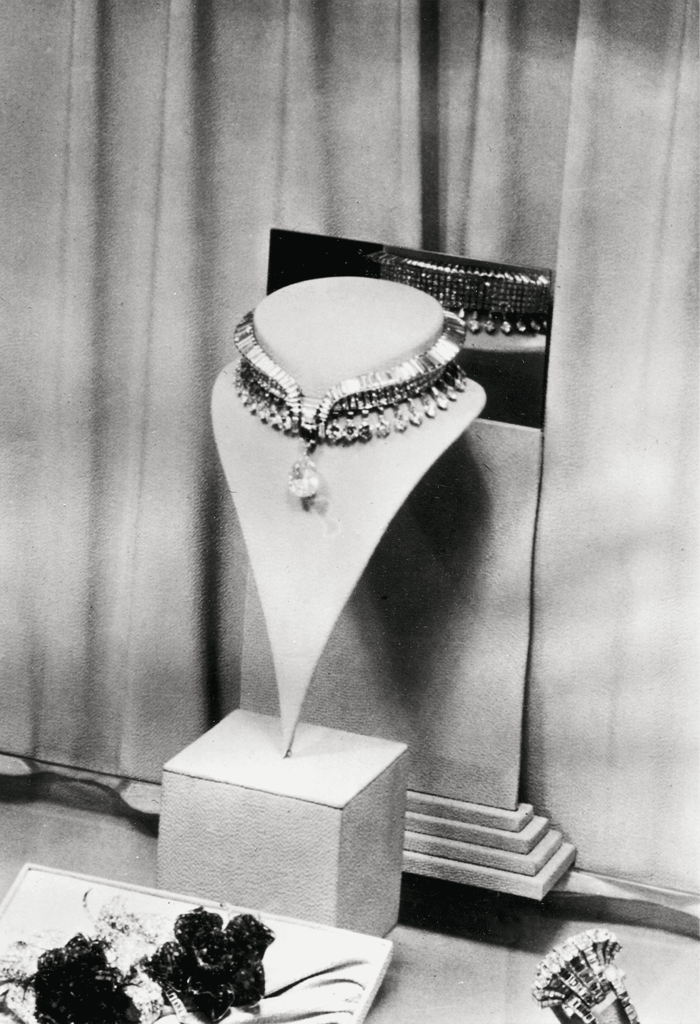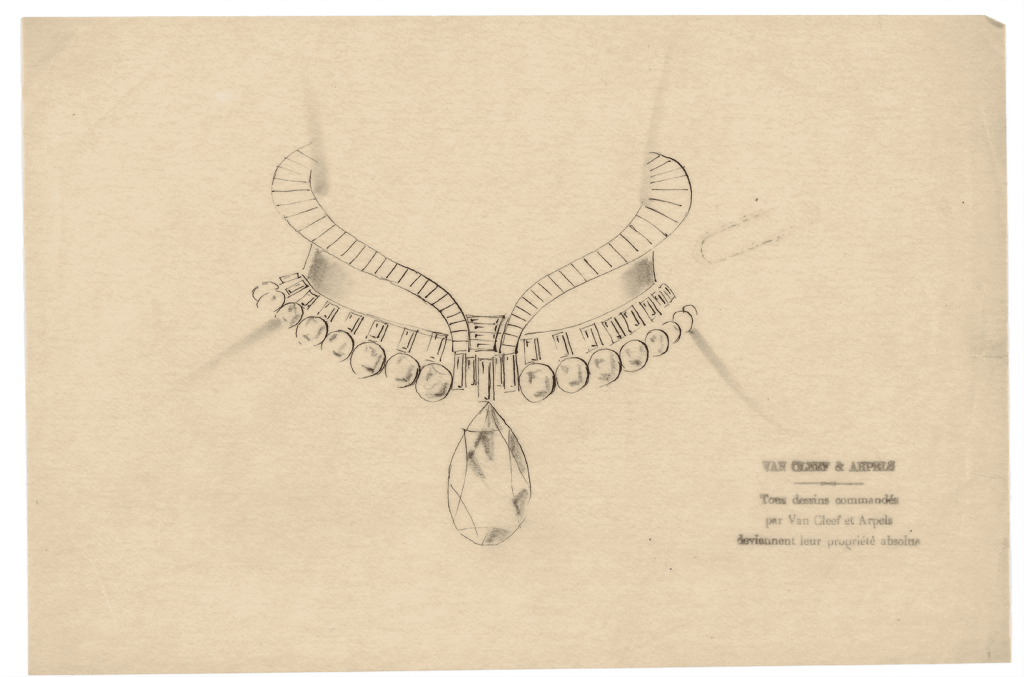The Pavillon de la bijouterie, joaillerie et orfèvrerie (Jewelry and Goldsmithery Pavilion) erected on the Quai d’Orsay during the Exposition internationale that was held in Paris from May to November 1937, revived the prestigious presentations dedicated to the jewelry arts of previous years.
“It is rare to see a quicker and more pronounced success than that enjoyed by the [space assigned to Class LV] at the Exposition.”1P.H., “Informations,” Le Figaro (August 6, 1937): 2. Visitors were welcomed by a monumental sculpture positioned at the entrance to the Pavilion, before moving inside where sumptuous lacquer decor provided a veritable trove of exhibitors’ creations: “superb jewels, set in precious metals, sparkled in display cases incorporated into the walls.”2Exposition internationale, Catalogue général officiel [n.p.], 1937. This presentation, seen by a wide audience, celebrated a revival of opulence in jewelry: “The 1937 Exhibition was to give young women a taste for extravagant jewelry again.”3Anonymous, “L’Exposition 1937 va redonner aux jeunes femmes – en les tentant – le goût des bijoux somptueux,” Excelsior, no. 27 (Spring 1936): 63.
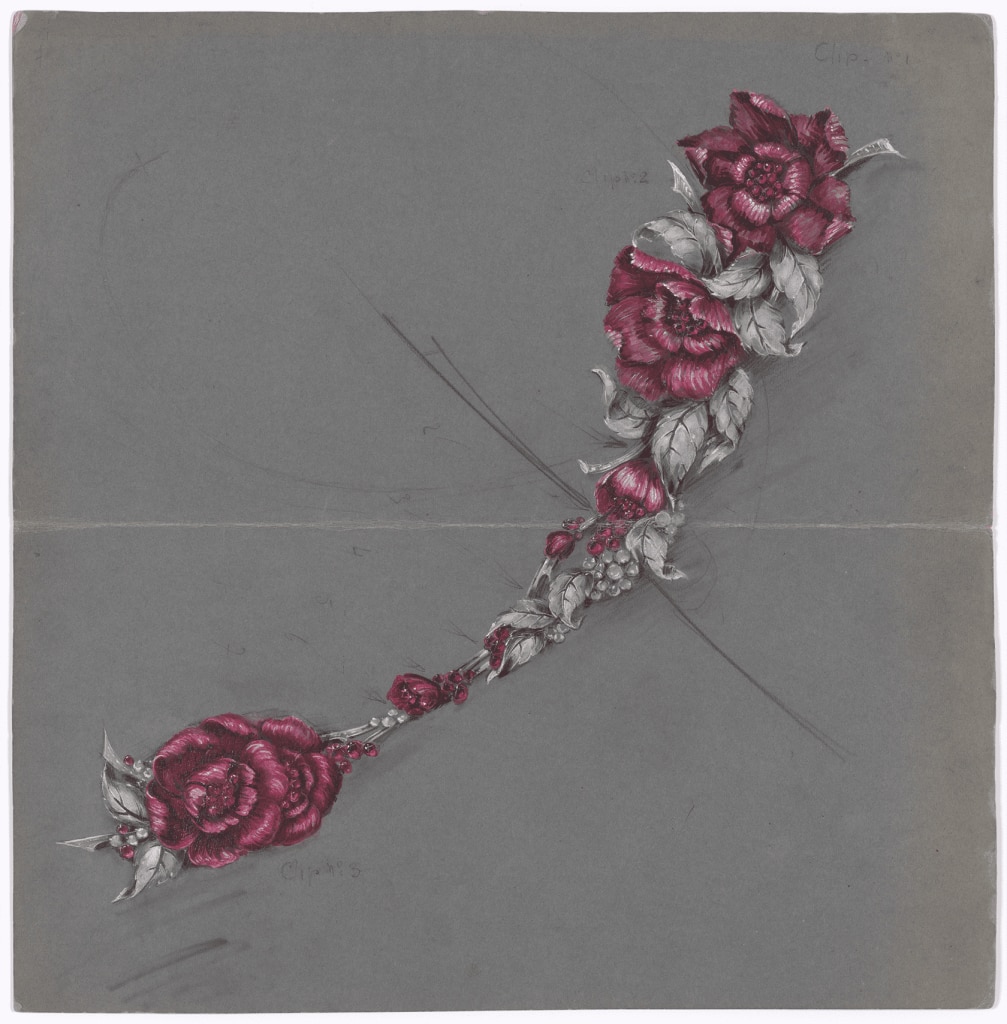
The two iconic inventions of the Maison
For this international exhibition dedicated to the arts and technology, Van Cleef & Arpels presented two inventions developed in 1933. The first, the Minaudière, with its precious clasp, was displayed in an open position to reveal its many compartments intended for a range of women’s accessories. The second was of the utmost importance: the mystery set. This novel setting marked the culmination of centuries of research in this field, and rendered the mount invisible. It allowed the gems’ qualities to be seen to advantage, the mount being as discreet as possible.
Jewels exposed by Van Cleef & Arpels
The Peony double clip was positioned majestically in the middle of the Maison’s stand, acting as ambassador for the mystery set. It was accompanied by the Chrysanthemum clip as well as another clip composed of two leaves of rubies and diamonds that notably illustrated the 1937 patent.
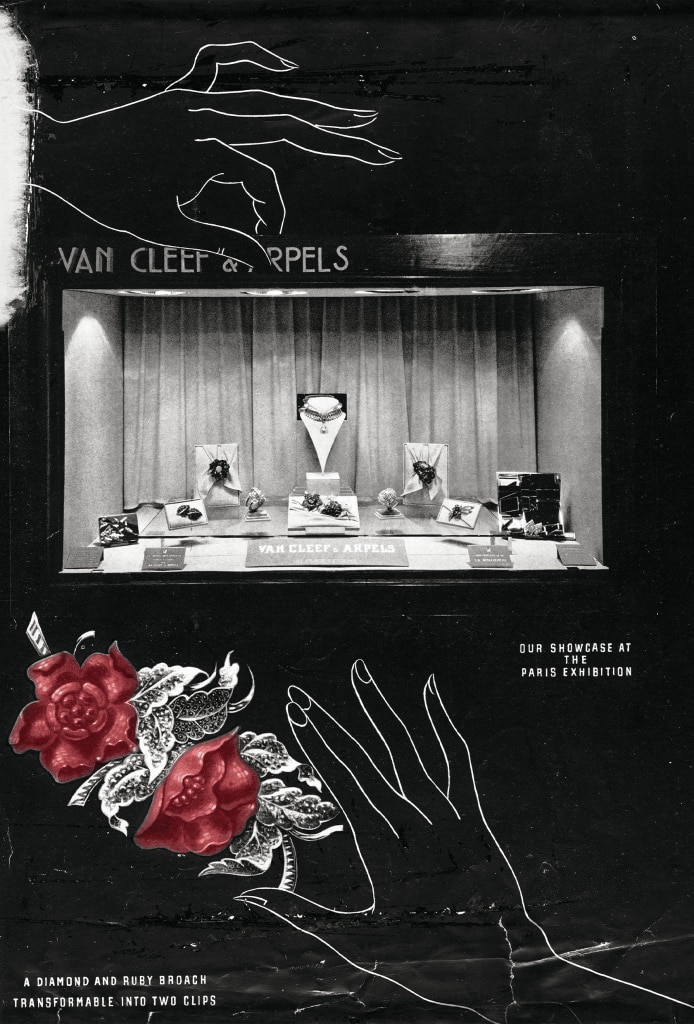
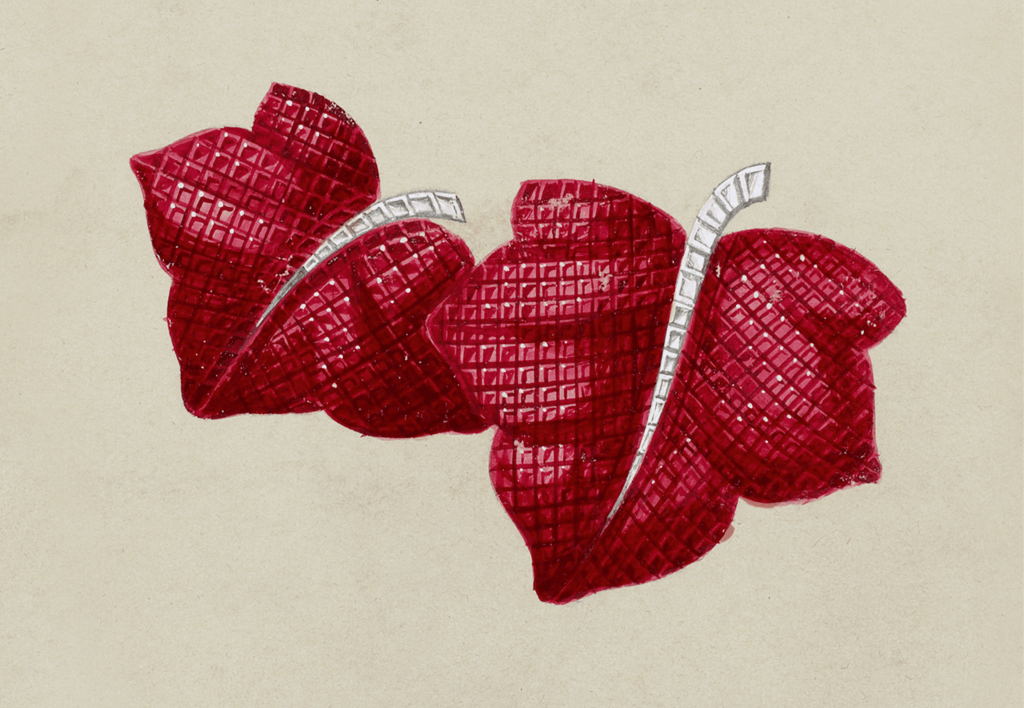
A bracelet completed the display case given over to this new technique. It was composed of a band of mystery set rubies, with a buckle of calibrated, baguette-cut diamonds in the middle, surrounding a dome of brilliants.
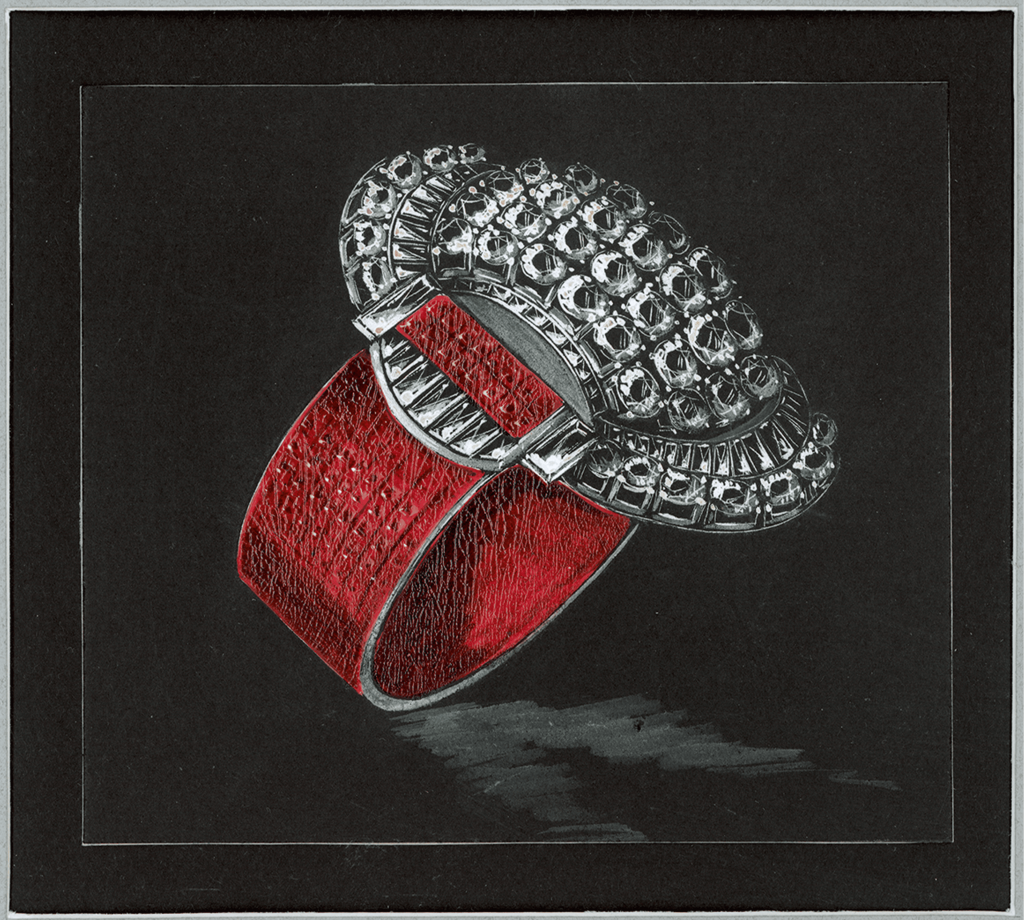
The last piece in the display case, positioned at the top of the stand’s pyramidal arrangement, was the Medici necklace, which enhanced the mystery set technique with its use of diamonds. An outstanding pear-cut diamond was suspended from it in the hollow of the neck. Like the Peony double clip, this creation, reminiscent of sixteenth- and seventeenth-century ruffs, introduced the historicist trend that typified the 1940s and 1950s.
